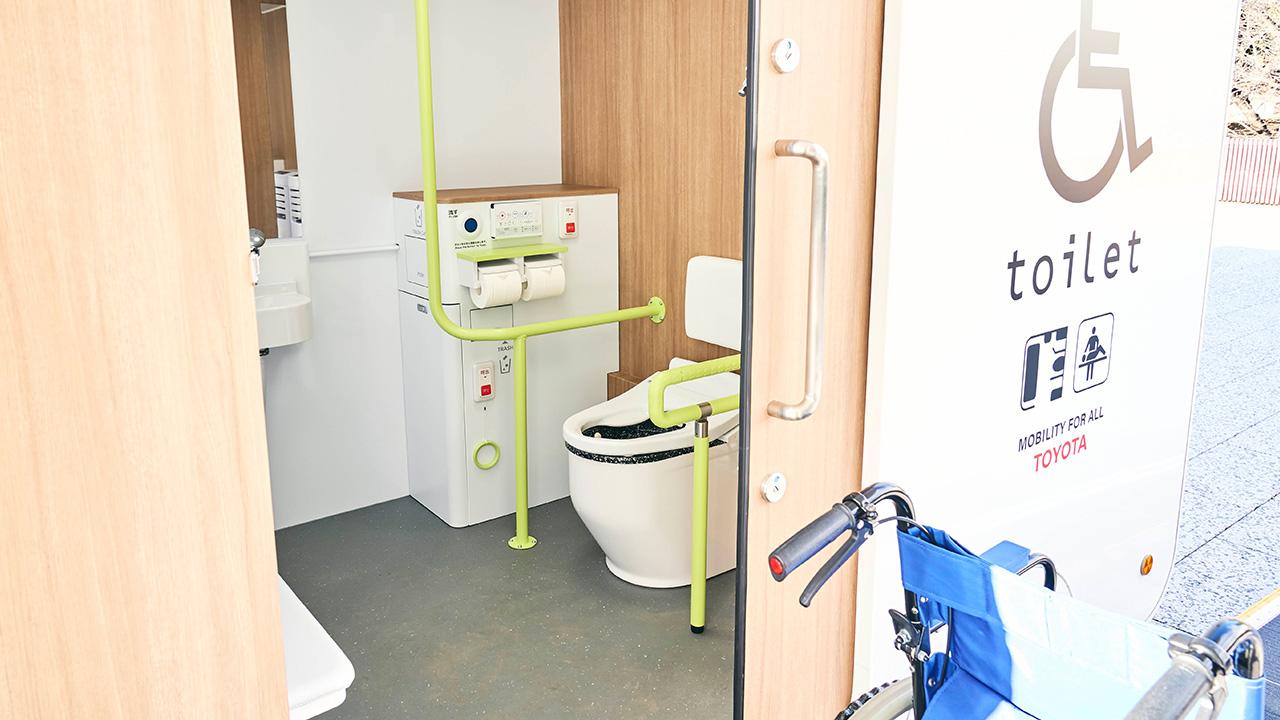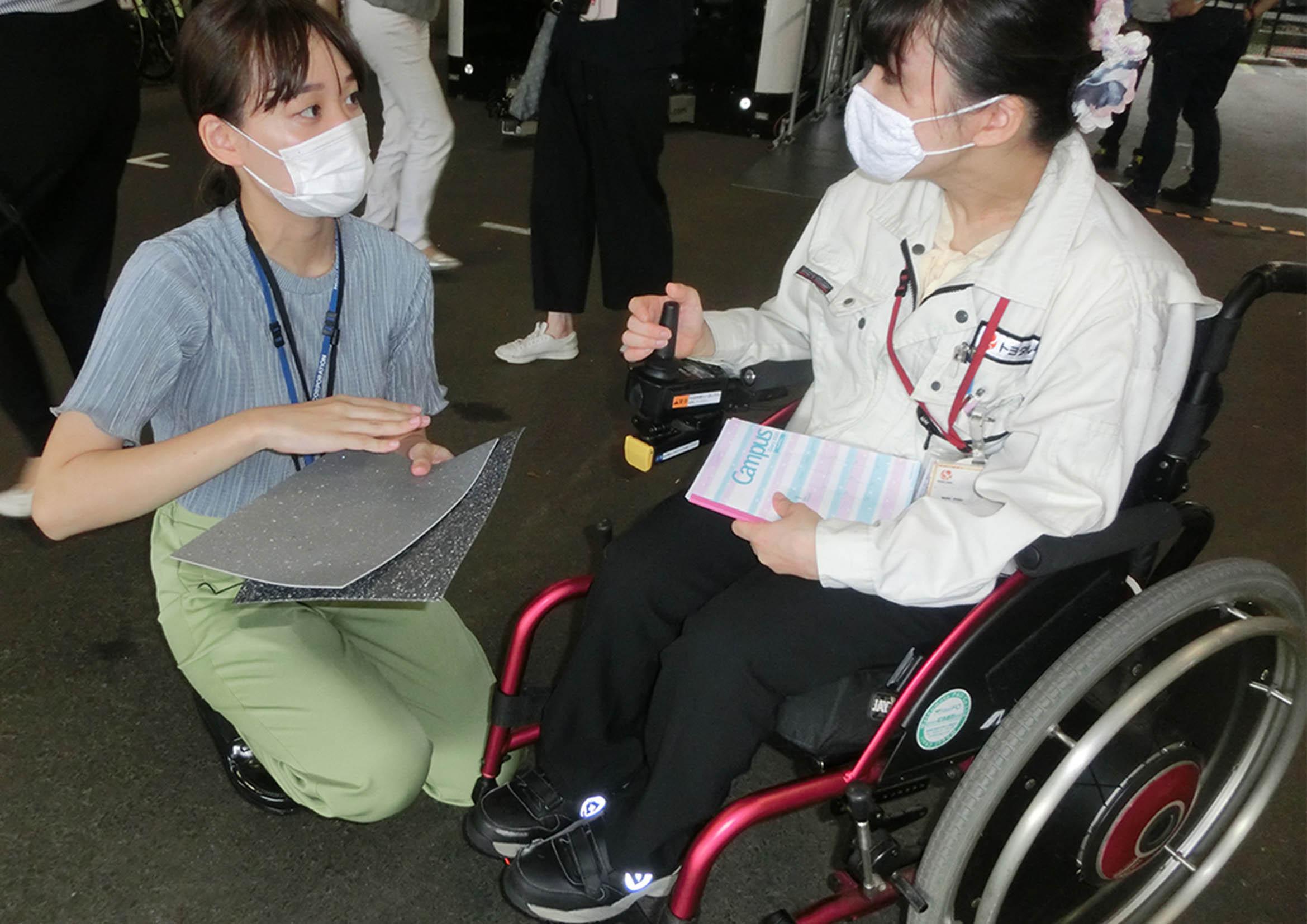
"Even with our disabilities, we still want to visit various places." Toyota's designers responded to the desires of wheelchair users by creating a mobile toilet.

Meet Toyota's Vision Design Division, a team devoted to conceptualizing and bringing Toyota's future vision to life.
This team was caught by surprise when they received an unexpected request from the division in charge of social contribution activities. The task? To design a toilet.
This wasn't a request for just any makeshift restroom that you'd find at a construction site. Instead, it was a call to create something that had never been seen before in Japan—a mobile accessible toilet. The driving force propelling the development team was the compelling wish of wheelchair users: “Even with our disabilities, we still want to visit various places.”

Beyond cars: Toyota designers take on toilets
It's commonly said that people use the restroom around five to seven times a day.
This means that the absence of a toilet at one's destination can be more than just a minor inconvenience—it can be a major issue. In fact, wheelchair users and individuals requiring assistance often find themselves having to forgo outings altogether due to a lack of accessible toilets.
Narrowing down their choice of destinations because of this is simply unacceptable. So, in 2019, a unique project was launched. Its immediate goal was to introduce prototype vehicles at the Tokyo 2020 Olympic and Paralympic Games. Reflecting on the project, Noriyo Inagaki, the Project General Manager of the Vision Design Division—a team usually focused on universal design and welfare vehicles—shared the following thoughts.
Inagaki

When we received a request for a mobile toilet from the Corporate Citizenship Division, our goal wasn't just to make the concept a reality. We aimed to go a step further, exploring how we could add value to this solution. In my view, this kind of deep exploration is what truly defines design.
The unexpected pitfall of light-colored floors
Once the initial model was completed and used by wheelchair users, an array of unanticipated feedback was received...
Inagaki
In an attempt to make the confined space feel more open, we initially decided on a light gray shade for the floor. However, we quickly learned that users were put off by how easily tire tracks showed on the bright surface.
In addition, we were informed that without sensation in their feet, transferring from a wheelchair to the toilet seat could be dangerous unless the floor had a textured, grippy feel to prevent slipping.
Users also showed a desire for an exterior design that was more subtle and architectural, one that would blend seamlessly into its surroundings, rather than stand out.
As a result, the team revised the design to incorporate a floor material that not only resisted tire marks but also prioritized safety by reducing slipperiness. This experience served as a stark reminder of the cornerstone of product creation, the practice of genchi genbutsu: learning through direct observation and feedback on site.

At that time, Yasuaki Iijima of the Vision Design Division, who was just two years into his role, found that listening directly to users yielded significant insights.
One of these revelations was why the toilet seat was designed to be about three centimeters higher than usual.
Iijima
I found that some wheelchair users use electric wheelchairs, which, particularly with the larger imported models, can have varying seat heights. We tested and validated the height to ensure the ease of transition from wheelchair to toilet seat.

We also received feedback from high school wheelchair users requesting a “cool-looking” toilet design.
While they all may be categorized as wheelchair users, there's a considerable range of individual differences.
Some are capable of standing with support, while others cannot. There are also people with hemiplegia, and lower limb amputations, with individuals spanning all ages from children to seniors, and each moves differently based on their type of wheelchair. The goal was to incorporate ingenious solutions to accommodate everyone.
A common thread, however, was the desire for a cool and fun space. There was a clear preference to steer away from designs that bore too strong a resemblance to traditional welfare vehicles, so the work on improving the mobile toilet design continued.
Then a significant breakthrough came in 2021, during a demonstration at the Tokyo 2020 Paralympic Games: the water usage was double what the team had estimated. In a scenario where installing a large water tank wasn't feasible, the water-saving technology of a particular toilet, known for its distinctive whoosh, plunk! sound in Japan, offered an insightful cue.

